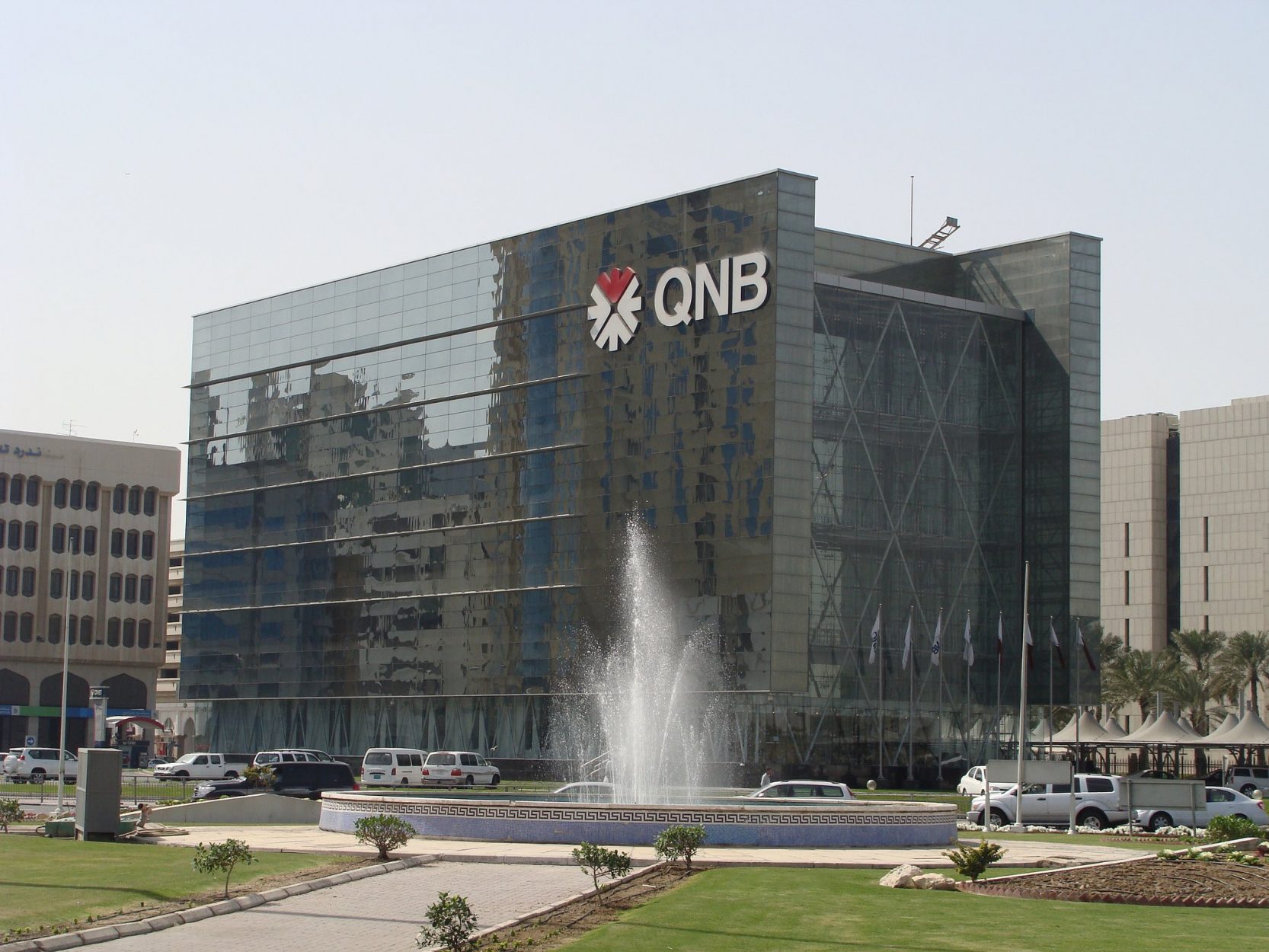QNB: Emerging Markets Growth Is Set to Face Significant Headwinds
بنك قطر الوطني: الأسواق الناشئة ستواجه تحديات كبيرة بسبب تباطؤ الاقتصاد الصيني
QNA
Doha: Qatar National Bank (QNB) said that the economic growth in Emerging markets (EM) will converge to a more moderate pace than in previous decades, given a slowdown of the Chinese economy, high interest rates with tighter financial conditions, and weaker external demand.
In its Weekly Commentary, QNB said, “Emerging markets (EM) have been a symbol of economic dynamism in recent decades. Many thriving economies globally embodied the possibility that, given the appropriate set of policies and reforms, they could sustain a rapid pace of growth.
“Growth in EM rose sharply in the early 2000s, from 5-year average rates that were close to 4 percent, to a peak of 7.6 percent in 2007. To a large extent, this development process was accounted for by the ascent of the Chinese economy, through both direct and indirect effects. Directly, given the Chinese average annual growth rates of close to 10 percent, and its increasing weight in EM, as it became the second largest economy in the world.
Indirectly, the effect on other economies materialised through supply-chain linkages, the mounting apetite for imported commodities, and a growing influence in international investment flows. This pace of growth was remarkable relative to the more advanced economies (AE): during 2010-2019, the average growth rate in EM was 3.1 percentage points (p.p.) higher than in AE. The pandemic is considered as an anomaly and hence not included in this discussion.
The bank explained, “However, this multidecade trend of high EM growth rates began to lose strength in more recent years, and deteriorated further during the Covid-pandemic. Importantly, we believe that this trend will continue over 2023-2024. In this article, we analyse three main factors that will weigh on EM performance going forward.
“First, the Chinese economy is undergoing a significant deceleration relative to its historical pre-pandemic performance, and its role as a global growth driver is beginning to fade. After 40 years of soaring growth rates averaging 9.5 percent during 1980-2019, this pace in 2023 and the upcoming years is likely to fall below 5 percent on average.
The slowdown is broad-based, and driven by numerous structural factors. These include demographic headwinds, declining productivity growth, high debt levels, a slower pace of structural reforms, and the rising threat of geoeconomic fragmentation. Furthermore, the government has not considered so far implementing an aggressive policy stimulus package, signalling a more cautious approach to long-term growth in an already highly levered economy. Given the importance of the Chinese economy for EM growth through direct and indirect channels, the slowdown in China implies an important challenge in the upcoming years.
“Second, higher global interest rates and tighter financial conditions have set a more challenging environment for growth. The US Federal Reserve has increased interest rates at the fastest pace in more than four decades, accumulating increases of 525 basis points (b.p.) since mid-2022, while the cycle of the European Central Bank has pushed policy rates up by 400 b.p. Although the two major central banks of AE are approaching the end of their tightening cycles, we expect relatively high global interest rates and tighter credit constraints to remain in place for a longer period of time, limiting foreign as well as domestic investments into EM.
“Third, soft external demand in 2023-24 implies a weaker impulse for growth from international trade. This is particularly important for the trade-dependent economies of Southeast Asia, which represent a significant contribution to EM growth as a group. In 2023, growth in international trade volumes is expected to be approximately 1.7 percent, which is a weak mark compared to the 2.5 percent 5-year average of the pre-Covid pandemic period. Without a substantial recovery in external demand on the horizon, this represents yet another headwind for EM growth.
QNB concluded, “All in all, going forward, economic growth in EM will converge to a more moderate pace than in previous decades, given a slowdown of the Chinese economy, high interest rates with tighter financial conditions, and weaker external demand. This raises the bar for EM to double down on reforms in order to improve their economic performance.”
قنا
الدوحة: توقع بنك قطر الوطني QNB أن يواجه النمو الاقتصادي في الأسواق الناشئة رياحا معاكسة كبيرة، نتيجة تباطؤ الاقتصاد الصيني، وارتفاع أسعار الفائدة في ظل تشديد الأوضاع المالية لكبح التضخم، وضعف الطلب الخارجي.
ولفت البنك في تقريره الأسبوعي إلى أن هذه الأوضاع ستضاعف من التحديات التي تواجه الأسواق الناشئة لإجراء المزيد من الإصلاحات من أجل تحسين أدائها الاقتصادي.
وقال البنك : إنه بشكل عام، من الآن فصاعدا، سيقترب النمو الاقتصادي في الأسواق الناشئة من وتيرة أكثر اعتدالا، مما كان عليه في العقود السابقة، حيث كانت الأسواق الناشئة نموذجا للديناميكية الاقتصادية، فقد أظهرت العديد من الاقتصادات المزدهرة حول العالم قدرتها على الحفاظ على وتيرة نمو سريعة، إذا توفرت مجموعة مناسبة من السياسات والإصلاحات.
وذكر التقرير أن النمو بالأسواق الناشئة ارتفع بشكل حاد بداية العقد الأول من القرن الحادي والعشرين، من متوسط معدلات نمو لخمس سنوات قريبة من 4 بالمئة إلى ذروة بلغت 7.6 بالمئة في 2007، مبينا أن ذلك يعود إلى صعود الاقتصاد الصيني بسبب تأثيرات مباشرة وغير مباشرة، تتمثل المباشرة باقتراب متوسط معدلات النمو السنوية للصين من 10 بالمئة، وتزايد ثقل الصين بالأسواق الناشئة، حيث أصبحت ثاني أكبر اقتصاد بالعالم.
أما التأثيرات غير المباشرة، فتتجسد في التأثيرات المترتبة على الاقتصادات الأخرى من خلال روابط سلاسل الإمداد، وارتفاع الطلب على السلع المستوردة، والتأثير المتزايد على تدفقات الاستثمار الدولي، حيث كانت وتيرة النمو لافتة مقارنة بالاقتصادات الأكثر تقدما، فخلال الفترة من 2010 – 2019، كان متوسط ??معدل النمو في الناشئة أعلى بواقع 3.1 نقطة مئوية مما هو عليه في المتقدمة.
وأضاف التقرير، أن معدلات النمو المرتفعة بالأسواق الناشئة، التي استمر لعدة عقود، بدأت تفقد زخمها، خلال السنوات الأخيرة، وتدهور أكثر أثناء جائحة فيروس كورونا كوفيد-19، متوقعا أن يستمر هذا الاتجاه خلال الفترة 2023 – 2024، سيما وأن هناك 3 عوامل رئيسية ستؤثر على أدائها في الفترة القادمة، أولا، هو أن الاقتصاد الصيني يشهد تباطؤا كبيرا مقارنة بأدائه التاريخي قبل الجائحة.
ويرجح أنه وبعد 40 عاما من معدلات النمو المرتفعة، التي بلغ متوسطها 9.5 بالمئة، خلال الفترة 1980 – 2019، أن تنخفض وتيرة النمو في 2023 والسنوات المقبلة إلى أقل من 5 بالمئة في المتوسط، وهذا التباطؤ واسع النطاق، ومدفوع بعوامل هيكلية، تشمل البنية الديموغرافية غير المواتية، وتراجع نمو الإنتاجية، وارتفاع مستويات الديون، وتباطؤ الإصلاحات الهيكلية، والتهديد المتزايد المتمثل في التفتت الجغرافي – الاقتصادي.
وأشار التقرير إلى أن الحكومة الصينية لم تفكر حتى الآن في تنفيذ حزمة تحفيز قوية عبر السياسات المالية، مما يشير إلى اتباعها لنهج أكثر حذرا تجاه النمو طويل الأجل في اقتصاد يعتمد بشدة على الاستدانة، ونظرا لأهمية الاقتصاد الصيني لنمو الأسواق الناشئة، فإن تباطؤه يعني ضمنا تحديا مهما في السنوات المقبلة.
ثانيا، اعتبر البنك أن ارتفاع أسعار الفائدة العالمية، وتشديد الأوضاع المالية، أدى إلى بيئة أكثر صعوبة للنمو، بعد أن قام بنك الاحتياطي الفيدرالي الأمريكي بزيادة أسعار الفائدة لكبح جماع التضخم، بأسرع وتيرة منذ أكثر من 4 عقود، حيث تراكمت زيادات قدرها 525 نقطة أساس في أسعار الفائدة منذ منتصف 2022، في حين دفعت دورة البنك المركزي الأوروبي أسعار الفائدة إلى الارتفاع بمقدار 400 نقطة أساس.
ورغم أن البنكين المركزيين الرئيسيين في الاقتصادات المتقدمة يقتربان من نهاية دورات التشديد الخاصة بهما، فإنه يتوقع أن تظل أسعار الفائدة العالمية مرتفعة نسبيا، وأن تستمر قيود الائتمان الأكثر صرامة لفترة أطول من الوقت، مما يحد من الاستثمارات الأجنبية والمحلية بالأسواق الناشئة.
ثالثا، رأى التقرير أن تراجع الطلب الخارجي في الفترة 2023 – 2024 يشير إلى ضعف العوامل المحفزة للنمو الناتجة عن التجارة الدولية، وهذا أمر مهم للاقتصادات التي تعتمد على التجارة في جنوب شرق آسيا، وتمثل مساهمة كبيرة في نمو الأسواق الناشئة كمجموعة.
وخلص التقرير بالإشارة إلى أنه في ظل توقعات نمو أحجام التجارة الدولية في العام 2023 إلى حوالي 1.7 بالمئة، وكذلك غياب ما يدل إلى حدوث تعاف كبير في الطلب الخارجي في الفترة القادمة، فإن هذا الأمر يمثل رياحا معاكسة أخرى للنمو الاقتصادي بالأسواق الناشئة.




